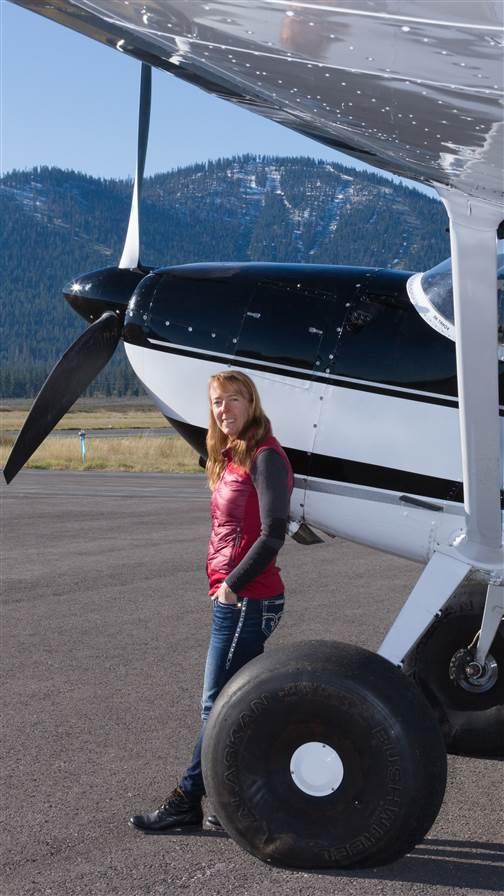Pilots: First instrument-rated deaf female pilot
Nicole Bringolf
Surmounting communications barriers
By Laurel Lippert
 Nicole Bringolf loves being outdoors—climbing, skiing, mountaineering, and river rafting. While she attended the University of Alaska Fairbanks, she did all that, as well as compete for the U.S. Deaf Ski Team and fulfill a dream of flying that began when she was 10 and flew in a Piper Archer. “I forgot that I had ever walked the Earth,” Bringolf said of the experience. Now age 42, she became deaf at age 1.
Nicole Bringolf loves being outdoors—climbing, skiing, mountaineering, and river rafting. While she attended the University of Alaska Fairbanks, she did all that, as well as compete for the U.S. Deaf Ski Team and fulfill a dream of flying that began when she was 10 and flew in a Piper Archer. “I forgot that I had ever walked the Earth,” Bringolf said of the experience. Now age 42, she became deaf at age 1.
In 2001 Bringolf co-founded the Aerobatic Company and Flight School at Reno-Stead Airport. She earned a private pilot certificate and, in June 2016, became the first deaf woman to earn an instrument rating.
Radio communication is not a requirement for private pilots at nontowered airports or in uncontrolled airspace. In fact, there are more than 200 deaf pilots in the United States and four instrument-rated deaf pilots. “I communicate by reading lips and using my residual hearing,” Bringolf said. “However, being profoundly deaf, I cannot understand the chatter on the radio.”
For her primary and aerobatic training, Bringolf sought out Rich Stowell, a master aerobatic instructor, to teach her. “His wife is hard of hearing,” she said, “so he knew how to communicate by careful enunciation and looking at me before he spoke.” While flying in a Decathlon with tandem seats, Stowell would pass notes to Bringolf over her shoulder.
Bringolf’s first love is her two teenage sons, and close behind is aerobatics. “Flying in unusual attitudes helps me understand the aerodynamics of the plane,” she said.
It wasn’t easy to find a CFII for her instrument training. After working with a few different instructors, Bringolf met Gary Phillip, “a detail-oriented instructor who gave me a lot of information that overloaded my brain until I learned how to digest it.” They developed a two-step process where her co-pilot uses shorthand on a whiteboard to communicate instructions from ATC and tells her the weather.
“Flying into different airports with control towers, varying weather conditions, and different approaches gives me more confidence as I expand my horizon,” Bringolf said. Controller-pilot datalink communication technology, a new communication tool providing digital text from air traffic controllers to pilots, eventually could be available to general aviation—potentially eliminating the need for a co-pilot for deaf pilots flying IFR.
For Bringolf, “flying is the grandest adventure and the greatest form of freedom and independence.” A hydrologist for the U.S. Forest Service for 13 years, she said her vision is a world where deafness is not a disability, nor does it define anyone. “I’m hoping my story will reframe how people look at the deaf community and see that we are confident, talented, and capable of doing many things,” she said.


